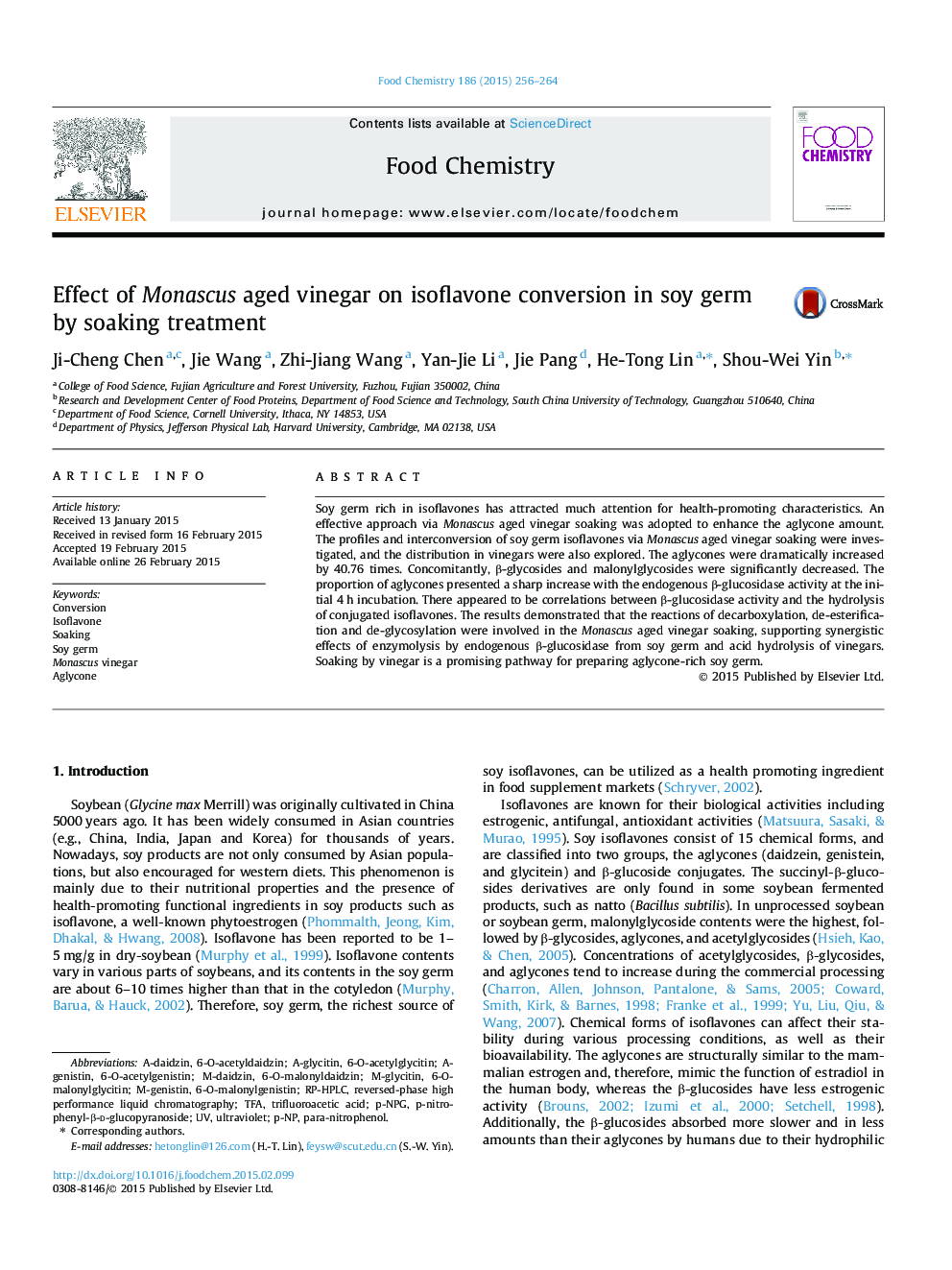| Article ID | Journal | Published Year | Pages | File Type |
|---|---|---|---|---|
| 7591421 | Food Chemistry | 2015 | 9 Pages |
Abstract
Soy germ rich in isoflavones has attracted much attention for health-promoting characteristics. An effective approach via Monascus aged vinegar soaking was adopted to enhance the aglycone amount. The profiles and interconversion of soy germ isoflavones via Monascus aged vinegar soaking were investigated, and the distribution in vinegars were also explored. The aglycones were dramatically increased by 40.76 times. Concomitantly, β-glycosides and malonylglycosides were significantly decreased. The proportion of aglycones presented a sharp increase with the endogenous β-glucosidase activity at the initial 4 h incubation. There appeared to be correlations between β-glucosidase activity and the hydrolysis of conjugated isoflavones. The results demonstrated that the reactions of decarboxylation, de-esterification and de-glycosylation were involved in the Monascus aged vinegar soaking, supporting synergistic effects of enzymolysis by endogenous β-glucosidase from soy germ and acid hydrolysis of vinegars. Soaking by vinegar is a promising pathway for preparing aglycone-rich soy germ.
Keywords
Related Topics
Physical Sciences and Engineering
Chemistry
Analytical Chemistry
Authors
Ji-Cheng Chen, Jie Wang, Zhi-Jiang Wang, Yan-Jie Li, Jie Pang, He-Tong Lin, Shou-Wei Yin,
